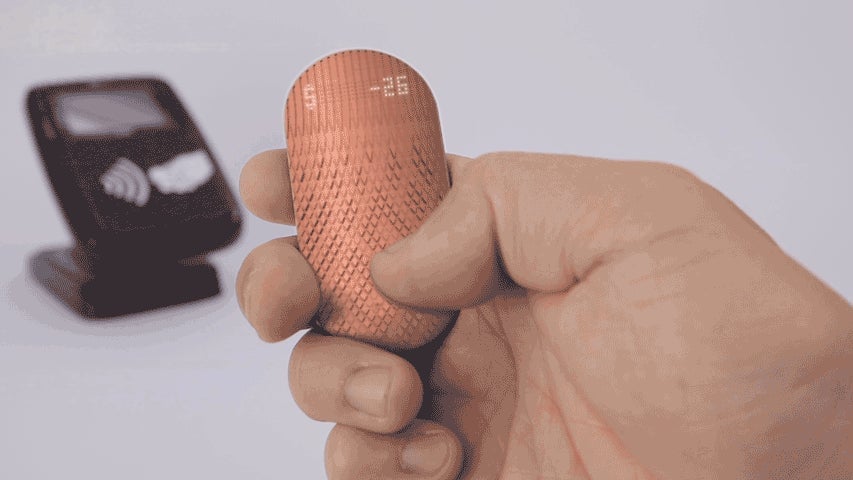The designers behind Fitbit’s trackers invented a tiny device to stop you from impulse shopping
Thanks to credit cards, digital payment apps, and smartphones, it’s easy to spend money without ever having to touch cash.


Thanks to credit cards, digital payment apps, and smartphones, it’s easy to spend money without ever having to touch cash.
In fact, it can be too easy. Research indicates that paying with cash can actually feel painful—and thus act as a deterrent to mindless spending. It’s also long been shown that consumers spend more (and are often willing to pay more for the same items) when they’re paying with a credit card because money feels much more abstract.
One firm believes that it can help people stop buying useless things by making cashless transactions feel more tactile. Scrip is a small copper-colored digital payment device designed to mimic the experience of paying with cash. Currently a concept, the device was created by the firm NewDealDesign, which is behind the design of Fitbit’s wearables.
Scrip uses near-field communication like Apple Pay and is linked to users’ bank accounts. To make a payment, a person would swipe his or her thumb over the device in a manner similar to counting bills. The device then shows the account’s updated balance.

Gadi Amit, the founder of NewDealDesign, said that Scrip “brings physicality back to money by replicating the positives of a cash transaction, such as the flipping and selecting of notes.” He came up with the concept for Scrip when he noticed his teenaged daughters were often out of funds, something that wasn’t a problem when they were younger and used only cash for purchases.
“Spending cash is actually painful to people,” said Jaeha Yoo, director of experience design at NewDealDesign. ”It literally triggers pain receptors—the act of moving these physical things from one side to the other triggers this loss aversion.”
The creators of Scrip are counting on the device to simulate that pain, which hopefully pushes users to become more mindful of their spending.